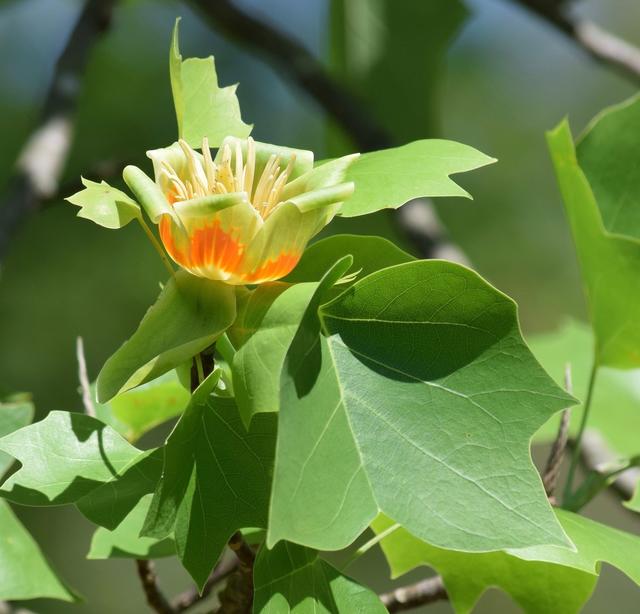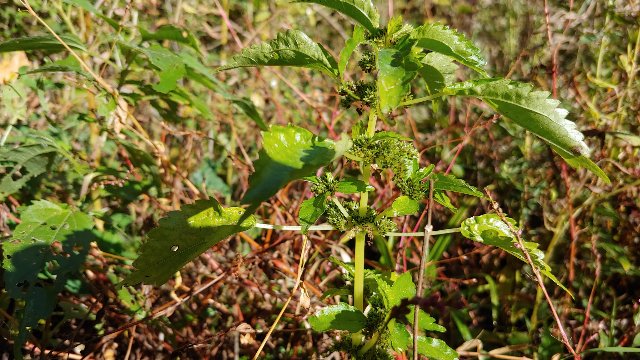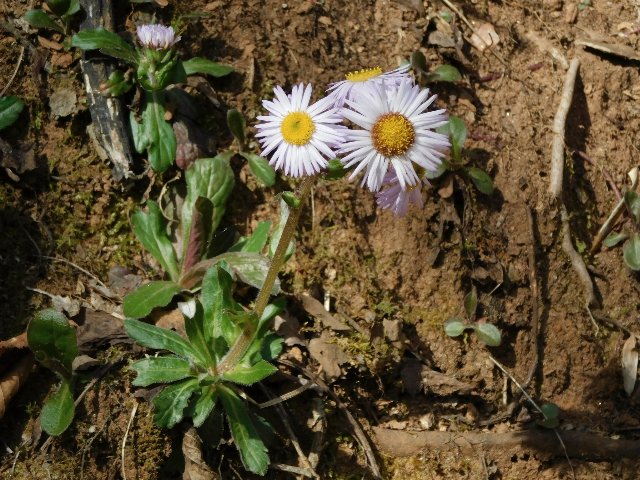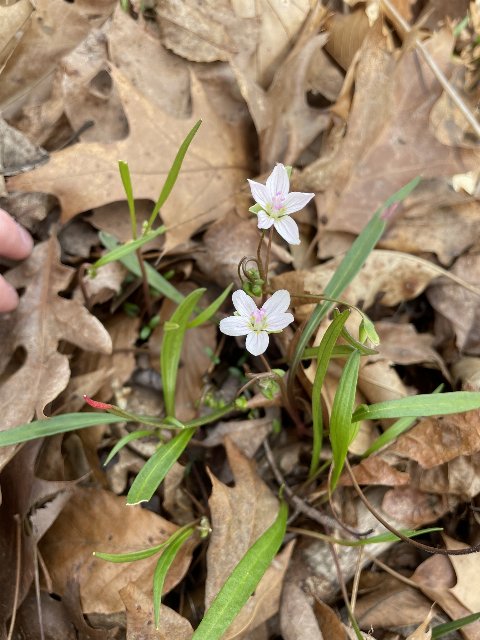Choosing The Best Common Names For Plants: Challenges & Solutions
April 19th, 2024 by Alex Zorach
Plants can be referred to either by common or scientific names. Scientific names, in theory, are less ambiguous. In practice though, there are limitations to scientific names too. Changes in or disagreement about taxonomy, combined with information propagating from older sources, can lead the same plant to be referred to by different scientific names. An example are the Joe Pyes (Eutrochium sp.) which are often still sold in nurseries as Eupatorium sp. in spite of being treated by most authorities as belonging to a separate genus for years now.In other cases, the same name might refer to different groups of plants, such as when a species gets split into two or more species, an older source might use one name to refer to the entire population whereas newer sources might use that name only refer to a limited subset. An example is Phragmites australis, which some sources use to refer to both populations we consider to belong to the native American common reed (Phragmites americanus) and the introduced eurasian common reed (Phragmites australis), which were formerly considered to be subspecies of the same species. In this example, the common name "Eurasian common reed" is actually more ambiguous than saying Phragmites australis, because it is clear with the modifier "Eurasian" that you are referring only to the introduced Eurasian taxon, whereas with only the scientific name it is not clear whether you consider the native American taxon to be a subspecies of the same species, or a separate species.
 Liriodendron tulipifera is known by many names, including "American Tuliptree", "Tulip Poplar", "Yellow Poplar", "whitewood", and "fiddletree". Some of these names are better than others; Liriodendron is not closely related to most poplars (Populus), instead being closer-related to magnolias. More people in the population at large will know it by the names "tuliptree" or "yellow poplar" than by its scientific name Liriodendron tulipifera, which illustrates the importance of common names in material intended to reach a broad audience. Photo © skitterbug, CC BY 4.0, Source.
Liriodendron tulipifera is known by many names, including "American Tuliptree", "Tulip Poplar", "Yellow Poplar", "whitewood", and "fiddletree". Some of these names are better than others; Liriodendron is not closely related to most poplars (Populus), instead being closer-related to magnolias. More people in the population at large will know it by the names "tuliptree" or "yellow poplar" than by its scientific name Liriodendron tulipifera, which illustrates the importance of common names in material intended to reach a broad audience. Photo © skitterbug, CC BY 4.0, Source.Common names can provide continuity through taxonomic changes, and also have the advantage of being in widespread use and more accessible. Names built from everyday words instead of in a separate scientific language is a major reason for their greater accessibility and common use. Both types of names are important, so on bplant.org we use both common and scientific names to refer to plants.
Because there are often multiple common names in use for a particular plant, we are often presented with the problem of choosing which name to use. Although we list all the widely-used common names we can find at the top of each article, and allow searching by each name, we still must pick a single common name to display wherever a particular species is mentioned on our site.
The casual nature of common names provides us flexibility. Scientific names are bound by rules governing which name is valid. If you agree on taxonomy, you can follow the rules and usually reach a consensus about which name to use for a particular species. With common names, because they are more arbitrary, you can simply choose which one to use. At bplant.org, we are opting to use that freedom to address some common naming problems, and communicate as much information as clearly as possible.
Problems With Some Common Names
There are numerous ways common names can be problematic. One of the worst things that can happen is if the name is ambiguous. For example, referring to a plant only as "hemlock" is problematic because it can refer to evergreen conifers of the Tsuga genus, but it can also refer to toxic carrot-family plants such as poison hemlock (Conium maculatum) or spotted water hemlock (Cicuta maculata). In some cases, even names contaning modifiers can be ambiguous; for example, "Spanish oak" can refer to southern red oak (Quercus falcata), Texas red oak (Quercus buckleyi), or to Quercus ×hispanica, a hybrid of European turkey oak (Quercus cerris) and cork oak (Quercus suber), both of which are introduced plants in North America. Such examples are widespread and we do our best to avoid such ambiguity, and notate it in the "Notes" field of each article when it does occur. This photo shows poison hemlock (Conium maculatum), which bears little resemblance to the evergreen trees bearing the same common name, belonging to the Tsuga genus. Photo © P Holroyd, CC BY 4.0, Source.
This photo shows poison hemlock (Conium maculatum), which bears little resemblance to the evergreen trees bearing the same common name, belonging to the Tsuga genus. Photo © P Holroyd, CC BY 4.0, Source.Another problem is that certain plant names can be offensive, such as by containing racial slurs. These names, thankfully, are getting phased out, and we also are doing our best to avoid offensive names.
Slightly more subtle problems include plants where the descriptor is misleading. For example, Japanese creeper (Parthenocissus tricuspidata) is often referred to in the US as "Boston Ivy" which is misleading as it is not native to Boston. Another example that is less-well-known but perhaps more-misleading is Savoy hawkweed (Hieracium sabaudum), which is frequently referred to as "New England hawkweed". This name is misleading as it is not native to New England, nor is it particularly widespread in New England, absent from 3 states and only reported in isolated counties of the others, whereas many other hawkweeds, such as rough hawkweed (Hieracium scabrum), are not only native but widespread and found in virtually all parts of New England.
Sometimes the misleading aspects of the name refer to the plant's physical characteristics. For example, black-fruited clearweed (Pilea fontana) is sometimes referred to as "lesser clearweed", but the species of clearweed (Pilea) that it most overlaps with is Canadian clearweed (Pilea pumila), and the sizes of these two species are both variable with nearly-full overlap, so the name wrongly leads people to expect that P. fontana is smaller. Another example involving morphology appears in sweet wood reed (Cinna arundinacea), which is sometimes referred to as "stout wood reed". This grass is not particularly stout; its stems are slender relative to a number of other grasses of similar height, its blades are narrower than many related grasses, and it also tends to have a tall and narrow form, certainly not the most "stout" growth habit even compared to other grasses that occur together with it in the same habitat.
 This photo, showing visibly dark fruit, illustrates why we think "black-fruited clearweed" is a better common name than "lesser clearweed". Photo © Ryan Sorrells, CC BY 4.0, Source.
This photo, showing visibly dark fruit, illustrates why we think "black-fruited clearweed" is a better common name than "lesser clearweed". Photo © Ryan Sorrells, CC BY 4.0, Source.These examples guide us towards a set of criteria for choosing the best common names. In some cases, the descriptiveness of a less-commonly-used name is so superior that we have decided it is worth favoring it in the interest of education and clarity.
What makes a good common name?
The best common names tend to fit the following patterns:- They are unambiguous, used only to refer only to one species and not others.
- They are already widely in use.
- Their full names communicate categorical relationships, such as membership in a particular genus or other taxon.
- They coincide with or directly relate to the scientific name, such as being a direct translation of the Latin.
- They are inoffensive.
- They accurately describe the plant's native range.
- They accurately describe some prominent physical characteristic of the plant.
- They accurately describe of the plant's habitat.
 Swamp white oak is an example of what we consider a good common name, unambiguous while accurately communicating two layers of taxonomy as well as its preference for low, wet habitats. Here one grows at Laplatte River Marsh Natural Area in Shelburne, VT. Photo © Tom Scavo, CC BY 4.0, Source.
Swamp white oak is an example of what we consider a good common name, unambiguous while accurately communicating two layers of taxonomy as well as its preference for low, wet habitats. Here one grows at Laplatte River Marsh Natural Area in Shelburne, VT. Photo © Tom Scavo, CC BY 4.0, Source.Another such example is "Limber pine dwarf mistletoe", which communicates not only membership in the Arceuthobium genus (Dwarf mistletoes), but that this is a specific species, (Arceuthobium cyanocarpum) and that limber pine (Pinus flexilis) is one of its hosts.
Sometimes we pick name because it is "less bad".
There are, unfortunately, a lot of cases where it is not possible to pick a name that ticks even most of the more important boxes discussed above. For example, we stuck with the name Robin's plantain (Erigeron pulchellus) even though it is slightly misleading and the descriptor "Robin's" isn't particularly informative. Erigeron pulchellus is not a plantain (Plantago sp.), although its rosette of basal leaves pressed tightly against the ground is slightly evocative of that genus. We stuck with that name not only because it is by far the most widely-used, but also because the only other names are ambiguous or even more misleading. For example, it is sometimes called "hairy plantain" but that more often refers to hairy fleabane (Erigeron pubescens). And it is sometimes called "blue spring daisy" but it does not belong to the daisy (Bellis) genus nor even the Bellidinae tribe, and its flowers are not particularly blue, usually at closest a bluish purple or lavender, not even the bluest of the Erigeron genus, a title that in Eastern North America would go to oakleaf fleabane (Erigeron quercifolius). Robin's plantain has a slightly unfortunate name, although not totally without merit, as its basal leaves slightly resemble the "plantains" of the Plantago genus. Photo © mjpapay, CC BY 4.0, Source.
Robin's plantain has a slightly unfortunate name, although not totally without merit, as its basal leaves slightly resemble the "plantains" of the Plantago genus. Photo © mjpapay, CC BY 4.0, Source.Another unfortunate example is Maryland sanicle (Sanicula marilandica) which is also called Maryland bleck snakeroot. Although the "Maryland" descriptor coincides with the scientific epithet marilandica, it is misleading. This primarily northern species is more common and widespread from New England through the Upper Midwest and well into Canada; although native to Maryland, it only occurs in isolated locations throughout the state, and with global warming has become increasingly rare in much of its range there. It is not and was never the most common or widespread sanicle (Sanicula) in the state; that title goes to Canadian blacksnakeroot (Sanicula canadensis), which, also contrary to its scientific and common names, is the more southerly of the two species.
Sometimes a careful choice can fix these confusing scenarios. For example, another pairing with misleading common names is narrow-leaved spring beauty (Claytonia virginica) and northern spring beauty (Claytonia caroliniana), which are often referred to, respectively, as "Virginia" and "Carolina" spring beauties, in correspondence with their scientific names. As with the two sanicles above, the ranges of these species are reversed from what the names would suggest. Although "Carolina spring beauty" is native to the Carolinas, it is only native to high elevations in the mountains in their most inland portions. Of the two species it is definitively the more northerly of the species, preferring northern hardwood forests that grow in cooler climates. The name "northern spring beauty" is thus much more descriptive than "Carolina", especially relative to "Virginia spring beauty", since the Carolinas are farther south than Virginia. In this case, we were able to make a better choice because the common names "narrow-leaved spring beauty" and "northern spring beauty" were already in use. But these names might still be slightly "bad" to some people in that they may be less familiar, and they do not correspond to the scientific epithets.
 We favor the name narrow-leaved spring beauty (Claytonia virginica) for this plant, as it is more descriptive of the plant's morphology and avoids the misleading implication of range relative to northern spring beauty (Claytonia caroliniana) if using the terms "Virginia" vs. "Carolina". Photo © Jonathan Sowers, CC BY 4.0, Source.
We favor the name narrow-leaved spring beauty (Claytonia virginica) for this plant, as it is more descriptive of the plant's morphology and avoids the misleading implication of range relative to northern spring beauty (Claytonia caroliniana) if using the terms "Virginia" vs. "Carolina". Photo © Jonathan Sowers, CC BY 4.0, Source.Progress at Updating Common Names
As you can see from the examples above, updating common names requires research and balancing of multiple aspects, including common usage, range, ecology, and morphology, among other considerations. So it can be a slow process. But we think it is important as it serves the goal of making our material as accessible and educational as possible.Nearly all (all but 37) of the plants listed on our site have at least one common name listed; in most cases, we defaulted to the common names used by the USDA PLANTS database, but over time, we plan on reviewing all common names. Where multiple common names are in use, we have found that the a large portion of the USDA PLANTS common names differ from the choices we would ideally make, and we have been updating our names as we review records. The USDA names more often coincide more closely with scientific names, which is only one of many criteria we use and not the one we give the highest priority.
We have currently added alternate common names to 708 plants, and of these, we have chosen common names to avoid misleading names in at least 47 cases and resolve ambiguity in at least 24 cases. As with all our work, the checking of common names is an ongoing process.
As always, we appreciate everyone who has donated to support our site. Donations help fund the work described here, as well as all the other work we have been doing recently, including building and refining range maps, completing new ID Guides and ecoregion and plant articles, and maintaining the site's servers and software to keep it up and running and loading quickly. Although we have received substantial funding we still are far from our funding goals and remain a mostly-volunteer effort. The long-term goal is to fund a larger team of people to work full-time on the site, but for now we are still working to get a sustainable annual budget to support my work on the site. Thank you to everone who has contributed!
Archive of All Blogs
The Bias Against Tall Plants, November 11th, 2025
A Focus on Goldenrods (Solidago sp.), July 23rd, 2025
Disturbance and its Role in Plant Habitat Preferences, May 29th, 2025
What "Native" or "Introduced" Mean: Myths and Misconceptions, March 11th, 2025
Smarter & More Informative Search Results, January 13th, 2025
The Effect of the 2024 US Election on Plant Biodiversity and bplant.org, October 30th, 2024
The Problems With Nursery-Bought Plants, And The Solutions, October 8th, 2024
More Databases Linked & Search Improvements for Scientific Names, July 9th, 2024
Choosing The Best Common Names For Plants: Challenges & Solutions, April 19th, 2024
Range Map & Taxonomic Update Progress, January 31st, 2024
Giving Thanks To Everyone We Rely On, November 22nd, 2023
Thinking More Deeply About Habitat, April 5th, 2023
2022 Year-End Summary: Successes & New Goals, February 15th, 2023
New Databases Linked: Flora of North America & NatureServe Explorer, November 11th, 2022
All Range Maps 2nd Generation, Taxonomic Updates, & Fundraising Goal Met!, September 29th, 2022
More Range Map Improvements, POWO Interlinking, And Notes Fields, June 7th, 2022
Ecoregion-Based Plant Lists and Search, March 30th, 2022
Progress Updates on Range Maps and More, February 10th, 2022
The Vision for bplant.org, December 9th, 2021
New Server: Software & Hardware, August 30th, 2021
More & Improved Plant Range Maps, July 19th, 2021
A Control Section for Invasive Plants, April 15th, 2021
Progress Bars & State Ecoregion Legends, March 11th, 2021
Our 2020 Achievements, February 9th, 2021
Interlinking Databases for Plant Research, November 11th, 2020
A New Homepage, Highlighting Our Articles, July 29th, 2020
A False Recovery, But North Carolina's Ecoregions are Complete!, June 9th, 2020
We're Back After COVID-19 Setbacks, April 3rd, 2020
Help Us Find Ecoregion Photos, February 27th, 2020
What We Achieved in 2019, December 30th, 2019
Plant Comparison and ID Guides, October 30th, 2019
We Are Now Accepting Donations, October 14th, 2019
US State Ecoregion Maps, New Footer, Ecoregion Article Progress, and References, September 19th, 2019
Tentative Range Maps of Native Plants, August 12th, 2019
Ecoregion Locator and Interactive Maps, July 10th, 2019
Using Ecoregions Over Political Boundaries, May 13th, 2019
How We Handle Wild vs Cultivated Plants, April 16th, 2019
A Blog To Keep People Updated On Our Progress, April 8th, 2019
Sign Up
Want to get notified of our progress? Sign up for the bplant.org interest list!


